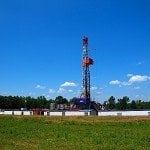Fifteen years after Hurricane Ivan ripped through the Gulf of Mexico, devastating offshore oil rigs, 700 barrels of oil per day continues to leak from the uncapped wells. Despite a $4,000 a day fine for uncapped wells, the company, Taylor Energy, has not found a viable way to stop the leaks after several attempts. Now, the U.S. government, led by the Coast Guard, has a new plan to end the longest oil spill in U.S. history — but the company is taking them to court to stop them, claiming the method will cause more damage.
The problem is that the walls of a deep-water canyon collapsed after the hurricane, burying the wells, but not stopping the flow of oil. Although there are disputes over how much oil is leaking — the government says 700 barrels per day, the company says less. Based on the government estimates, the Taylor Energy spill has discharged between 1.5 million and 3.5 million barrels in the last 14 years. Taylor Energy put aside a trust of $440 million for the cleanup effort in 2008.
Clean up plan might cause more damage?
Fast forward to the end of February 2019, and Taylor Energy presented arguments that the plan put forward by the Coast Guard to contain the spill will fail or cause more damage. The Judge in the case, U.S. District Judge Ivan Lemelle pointed out, according to a report in the Washington Post “Look, you tried. But it’s still going on after all this time. Let’s get someone else to look at this.” However, he didn’t spare the Coast Guard criticism, demanding to know why it took the government so long to decide to act.

According to the government’s lawyer, Erica Zilioni, new data revealed a higher flow of oil than previously indicated by the reports from Taylor Energy. Meanwhile, lawyers for Taylor Energy countered that the plan to use Couvillion Group to contain the spill would fail. At a relatively low cost of $7 million. Couvillion Group’s strategy is to use a device to contain surface oil, while hopefully finding a path to the wells through the thick sediment.
For years, the company has put off any efforts to dig in the sediment, claiming it would make matters worse. However, the government’s position, led by a Unified Command of four federal agencies, counter that capping the wells is less risky if the oil released can be contained. The effort would be to deploy a Couvillion Group plan. Couvillion Group is the company that worked on the BP oil spill in 2010 — not far from the Taylor Energy site. Using a combination of “marine equipment, vessels, personnel and logistics for BP, the U.S. Coast Guard and National Park Service.” — according to their website. [1]
Couvillion has already completed the surveys of the canyon at the end of 2018 and is testing the next phase. Taylor Energy, however, has asked the judge to stop the work, claiming it is a flawed theory that will lead to a bigger environmental catastrophe. However, under the Interior Department of Oil Pollution Act, Taylor Energy must cap each of the wells.
NOTE
[1] Couvillion website>>































